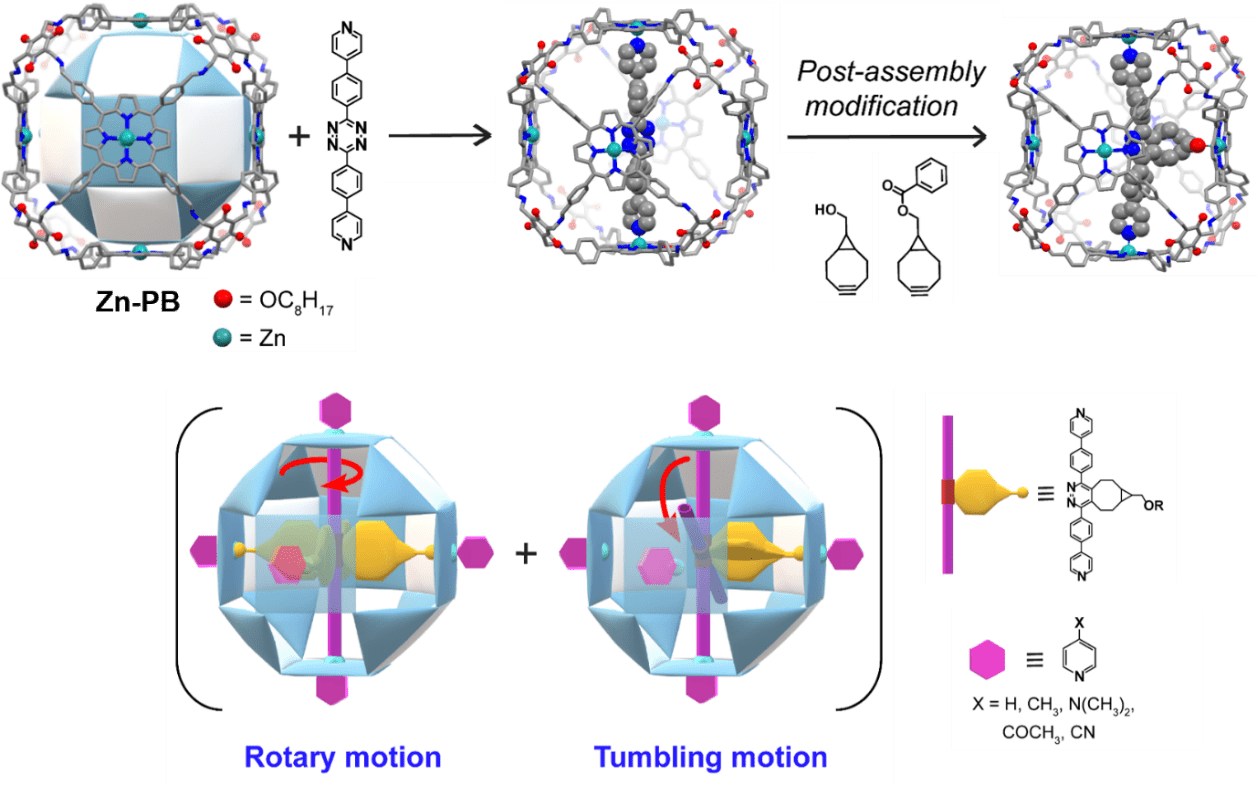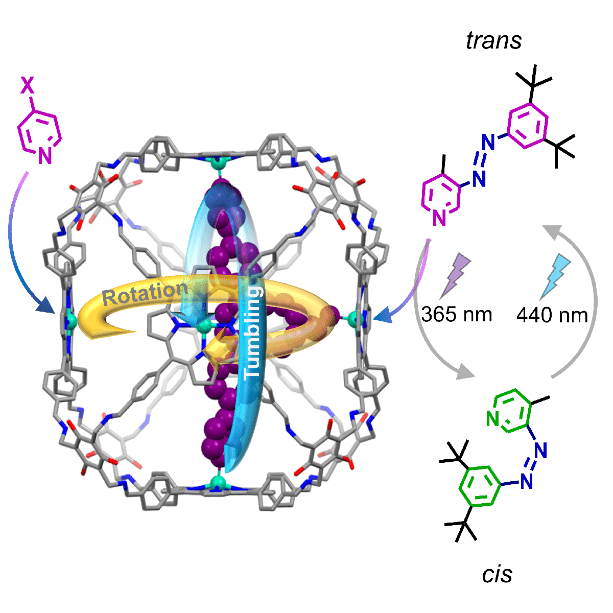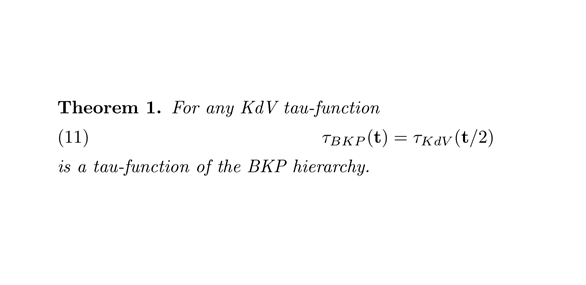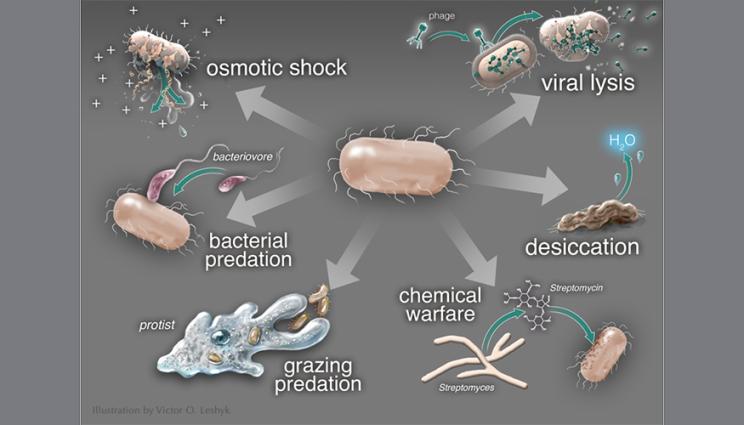ナノ構造のケージ内に分子ローターを構築することで、可変な分子デバイスを開発することに成功 The construction of a molecular rotor inside a nanostructured cage allows for the development of a tunable molecular device
2022-01-10 大韓民国・基礎科学研究院(IBS)
韓国・浦項基礎科学研究所自己組織化複雑性センターのKIM Kimoon所長らの研究チームは、中空キューブ状の亜鉛(II)金属化ポルフィリンケージ(Zn-PB)分子内に遠隔操作可能な超分子ローターを作ることに成功しました。
一般に、分子ケージ内にローターを直接設置することは、ケージの窓の大きさに制限があるため、非常に困難である。そのため、研究者たちはボトムアップの戦略に従って、ローターを含むケージを作製してきた。Kim教授らは、こうした難題を回避するために、まず直線状の軸をZn-PB内部に挿入し、次にサイドアームで改造してローターを構築するという新たな戦略を考案した。

Figure 1. Zn-PB内のローターの設計、合成、および機能。

Figure 2. 化学的刺激物や光応答性分子の存在下で、ローターの回転と転倒運動を遠隔制御する。
<関連情報>
Boxing up molecular machines
Boxing up molecular machines
Boxing up molecular machines. The construction of a molecular rotor inside a nanostructured cage allows for the developm...
Redirecting
ポルフィリンケージ内に搭載された遠隔操作可能な超分子ローター Remotely controllable supramolecular rotor mounted inside a porphyrinic cage
Avinash Dhamija Chandan K. Das Young Ho Ko In-Chul Hwang Lars V. Schäfer Kimoon Kim
VOLUME 8, ISSUE 2, P543-556, FEBRUARY 10, 2022
Open AccessPublished:January 18, 2022 DOI:https://doi.org/10.1016/j.chempr.2021.12.008
Highlights
•Design and synthesis of a supramolecular rotor within a porous Zn–porphyrinic cage
•High-yielding IEDDA reaction enables facile construction of the rotor inside the cage
•Initiation of both rotary and tumbling motions of the rotor with chemical stimuli
•Reversible control of the dual mechanical motions by a photo-dissociable ligand
The bigger picture
The confinement of biological molecular machines, which are controlled by various chemical or physical stimuli within the cytoskeleton matrix, endows them with remarkable precision and programmable mechanical motions. Biological molecular machines are far more complex than any artificial molecular machine ever built. To mimic the intricate behavior of biological machinery, strategies need to be developed for embedding and confining artificial molecular machines within nanoscopic domains in which their functions can be specifically controlled by external stimuli. One such approach is the confinement of molecular machines inside porous organic cages. The high porosity of the organic cages provides ample room for uninterrupted movement, and its shape-persistent and interactive framework provides a high degree of control over the mechanical motion triggered by external stimuli. Our strategy may lay the foundation for the development of tunable molecular devices using porous organic cages.
Summary
The confinement of molecular machines into nanostructured cages and controlling their functions by external stimuli holds great potential for the creation of smart functional materials that imitate the embodied intelligence of biological processes. Herein, we report the construction of a supramolecular rotor in a porous Zn-metallated porphyrinic cage (1) by encapsulation of a tetrazine-based linear axle (LA) via metal-ligand coordination bond, followed by post-assembly modification to append a controllable side arm to LA via inverse electron demand Diels-Alder (IEDDA) reaction. While the rotor alone shows nearly no motion, the addition of pyridine derivatives as a zinc coordinating ligand results in both 90° jump-like rotary motion of the rotor and slow tumbling motion of the rotor axle in a stochastic manner. Interestingly, the dual motions of the rotor can be reversibly controlled by the UV and visible light-induced coordination and dissociation of an azopyridine-based ligand with Zn centers as a signal transducer.
Graphical abstract




